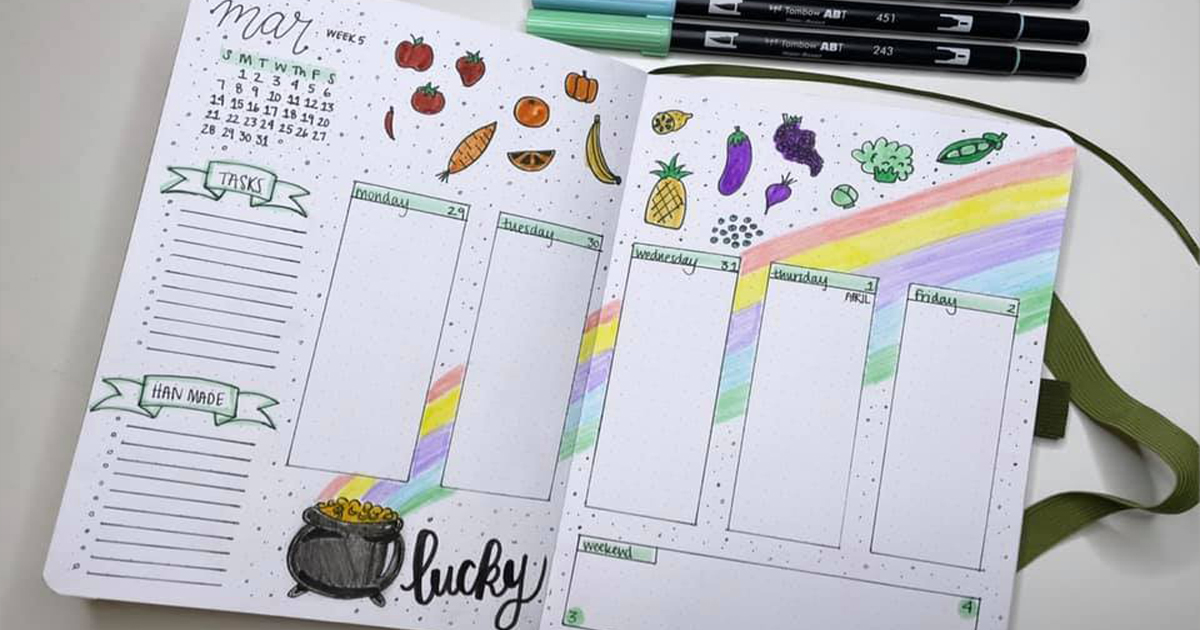How To Journal For Self Improvement

Writing in a journal is an easy way to improve your mental health and grow as a person. Writing down your ideas and feelings is a way to think about yourself and gain a better understanding of them. You can write in a book every day to make it a habit or a part of your morning practice. You can figure out the way you want to go in and learn how to organize the important things in your life by writing down your dreams, goals, and thoughts. Keeping a journal can be done online or in a real book. There are also different ways to keep a journal, like writing about your thanks or making art. We’re going to talk about what writing is and how it can help you live a better life.
Benefits of Journaling
Writing in a journal is a great way to improve yourself and grow. It can help you develop important traits like awareness, duty, attention, gratitude, and thinking about things in a more complete way if you do it regularly. By allowing us to reflect on our thoughts and experiences, we gain a better understanding of ourselves and our lives.
One of the most significant benefits of journaling is the collection of knowledge and the growth that comes from the act of journaling itself. Through day-to-day reflection, we can recognize patterns, identify our strengths and weaknesses, and track our progress toward our goals. This kind of self-awareness allows us to make better decisions and take more proactive steps toward self-improvement.
In the short-term, journaling can be a way to manage stress and anxiety, improve focus, and enhance our overall well-being. By taking time each day to write down our thoughts and feelings, we become more present and better able to manage our emotions.
Journaling can serve as a tool for long-term personal development and growth by allowing us to document our journey and track our progress, including setbacks and accomplishments. This record then becomes a valuable resource that we can refer back to in the future. It reminds us of how far we’ve come and provides us with the motivation we need to keep going.
Overall, journaling is an incredibly rewarding experience that can help us grow and develop in countless ways. By practicing journaling regularly, we can cultivate important life skills, gain a greater understanding of ourselves and our lives, and become more intentional about our personal growth and development. Whether you’re just starting or have been journaling for years, it’s never too late to begin the journey toward self-improvement and self-discovery through the power of journaling.
Get Started With Journaling
Journaling can be an excellent tool for self-improvement. However, getting started can sometimes feel overwhelming. You might be unsure of what to write, what kind of journal to use, or what your journaling goals should be. In this guide, we will talk about how to get started with journaling and provide practical tips to help you establish a journaling habit that will support your personal growth and development.
Find a Time and Place That Works for You
Journaling is a powerful tool for self-reflection and self-improvement. One key aspect of establishing a journaling habit is finding a time and place that works for you. In this article, we will explore the three main times to journal, the benefits of each time, and how to find a quiet place to reflect.
Choosing the right time depends on your goals and lifestyle. Morning journaling is a great way to start your day. It can set the tone for the day ahead and help you to focus on your goals and priorities. Many people find that writing in the morning is a calming and centering way to prepare for the day.
Evening journaling is another popular option. It offers an opportunity to reflect on the day that has passed and to process any emotions or thoughts that arose during the day. Many people find evening journaling to be a calming and soothing way to transition from a busy day to a restful night.
Anytime journaling is another option for those who have busy schedules. Anytime journaling can be done during breaks at work, while waiting for an appointment, or before bed. The benefits of any-time journaling are that it allows for flexibility and can make it easier to establish a journaling habit.
Finding a quiet place to journal can help you to relax and focus on your thoughts. When looking for a place to journal, consider finding a quiet and comfortable spot where you won’t be disturbed. This could be a cozy corner of your home, a park bench, or a quiet café. Experiment with different places to find what works best for you.
When choosing a time and place for journaling, it’s important to think about what works best for your lifestyle. Whether it’s in the morning before breakfast, in the evening after dinner, or anytime in between, finding a regular time and a quiet place will help you to establish a journaling habit and reap the benefits of reflection and preparation.

Choose the Right Tools for You
Journaling is a great tool for self-improvement, but choosing the right tool for you is crucial to making it a habit and reaping the benefits. There are many options available, including physical journals, digital journals, audio or video journals, and apps. In this article, we will explore the pros and cons of each tool and how to choose the best one for you.
Physical journals are a classic option for journaling. They come in many styles and sizes, from simple and straightforward to elaborate and decorative. Writing on physical paper can be cathartic for some people and may help promote mindfulness and emotional processing. However, physical journals require storage space, and it can be challenging to organize your entries over time.
Digital journals offer the convenience of easy storage and portability. They typically come in the form of apps or computer software, allowing you to access your journal from anywhere with an Internet connection. The digital format also offers various features such as automatic reminders, custom voice notes, and the ability to attach multimedia content. The downside of digital journals is that they can be distracting, such as notifications and email reminders, and they may be inaccessible during technical downtime or Internet shortage.
Audio or video journals are a newer form of journaling commonly used for recording personal thoughts, memories, or ideas. This type of journaling allows you to save recordings on your computer or device, making them easily accessible for future listening. Audio or video journaling is ideal for people who prefer to speak rather than write. However, recording and playback could be time-consuming. The lack of written words may also make it harder to review, reference, and annotate your thoughts in chronological order.
Finally, Apps are another popular choice for journaling because they often offer a range of features such as customization, data analytics, reminders, and other useful functionalities. Apps typically sync across devices, making it easy to journal on the go. They can also include a variety of prompts or exercises to help you get started or change things up when you feel stuck. However, some apps require subscription fees or may not provide all those additional options that you desire.
When choosing a journaling tool, consider your personal preferences, accessibility, and convenience. If you enjoy the physical act of writing and want to keep your journal private, a physical journal may be the right choice. Digital journals are ideal if you want to access your journal from anywhere, store your entries digitally, and add multimedia content. Audio or video journals are perfect for people who prefer speaking their thoughts out loud, whereas an app provides a range of features, including prompts and exercises, to support your journaling process.
Set Goals and Objectives for Your Journals
Journaling is an effective tool for personal growth and achieving self-improvement goals. However, to reap the full benefits of journaling, it is essential to set goals and objectives before starting your journaling journey. Here are some steps to guide you on how to set goals and objectives for your journals:
Step 1: Identify the Objective of Your Journaling
The first step in setting goals and objectives for your journaling journey is to identify what you hope to achieve from it. Start by asking yourself questions about what you want to gain from journaling. Do you want to monitor your mental health, reflect on your personal growth, or simply document your daily life? Having clear objectives will help you to choose the appropriate type of journal and writing prompts that align with your goals.
Step 2: Create a Plan for Achieving Your Objectives
Once you have a clear objective, the next step is to create a plan for achieving it. This plan should detail how often you plan to journal and what you intend to write about. Set specific and measurable goals for your daily routine, such as writing for 10 minutes every morning before starting your day, or tracking your mood each night before bed.
Step 3: Choose the Type of Journal That Aligns with Your Goal
Different types of journals can help achieve different goals. For example, a gratitude journal can help you focus on positive aspects of your life, while a bullet journal can help with organization and productivity. Choose a type of journal that aligns with your objectives.
Step 4: Pick Writing Prompts to Support Your Objectives
After choosing a type of journal that aligns with your objectives, select writing prompts that help support your goals. These prompts should allow you to explore your thoughts, emotions, and ideas while focusing on achieving your desired outcome.
Step 5: Set Measurable Goals and Review Your Progress Regularly
Finally, to achieve your objectives, it is important to set measurable goals and review your progress regularly. Monitor your journaling habits, evaluate how well you are meeting your goals, and make adjustments as needed. Celebrate your successes along the way, and use any challenges as learning opportunities to move forward.
Types of Journals to Consider
When it comes to journaling for self-improvement, selecting the right type of journal can be crucial in achieving your desired outcomes. In this article, we will explore different types of journals that you can consider to support your goals, focusing on how they can help you to grow and reflect on your experiences. Whether you are new to journaling or have been practicing for a while, evaluating different options can help you to find the perfect fit for your journaling practice.
Gratitude Journals
Gratitude journals have become an increasingly popular tool for improving mental and physical well-being. These journals are a type of personal growth journal that encourage individuals to reflect on and appreciate the positive aspects of their lives.
The benefits of gratitude journaling are many. For starters, it has been shown to help reduce stress levels and increase feelings of well-being. Practicing gratitude can also help individuals feel more content and satisfied with their lives, leading to a greater sense of happiness.
Getting started with gratitude journaling is easy. Simply start by making a list of the things and people in your life that make you the happiest. This list can be as long or as short as you wish and doesn’t need to be shared with anyone else. Do this exercise regularly – perhaps daily – and add a little explanation or note of why each item on your list brings you joy.
Practicing gratitude as a form of contemplation can provide tremendous mental benefits. By taking time each day to reflect on the good things in our lives, we’re more likely to maintain a positive outlook and feel better about ourselves. Additionally, gratitude journaling can help us build stronger relationships, as we become more appreciative of the people in our lives who contribute to our happiness.
Reflection Journals
Reflection Journals are a powerful tool for self-improvement and personal growth. This type of journaling technique involves the writer reflecting on their experiences and interpreting the meaning they give to events. By doing this, individuals can gain a deeper understanding of themselves and how they respond to various situations in their lives.
Incorporating gratitude into reflection journaling can also provide tremendous benefits. By taking time each day to contemplate three things you are grateful for, you can shift your focus to the positive aspects of your life and foster a more grateful and content mindset. It’s been shown that those who regularly practice gratitude have higher levels of subjective well-being and experience more positive emotions.
When journaling with a focus on reflection and gratitude, it’s important to consider prompts that encourage deeper introspection. Some prompts to consider include: “What did I learn today?”, “What brought me joy?”, and “What moments made me feel grateful?” These prompts can serve as starting points for reflecting on your day, cultivating a more positive outlook, and identifying areas for personal growth.
Reflection journals with a gratitude focus pay huge rewards in one’s life. The process of reflecting on experiences and documenting gratitude helps individuals develop a greater sense of self-awareness and cultivate positive emotions. It also encourages individuals to focus on the good things in their lives, which can have a powerful impact on mental and emotional well-being.
Overall, reflection journals with a gratitude focus are a valuable tool for anyone looking to improve their self-awareness, personal growth, and well-being. By taking a few minutes each day to reflect on experiences, interpret meaning, and express gratitude, individuals can develop a more positive and fulfilling outlook on their lives.
Creative Writing Journals
While journaling is often associated with reflection and introspection, it can also serve as a valuable tool for creative writing. Creative writing journals can encompass many forms, such as poetry, fiction, and non-fiction. Writing in a journal allows writers to experiment with different writing styles and explore their creativity.
One way to use a journal for creative writing purposes is to set aside time each day to write. This can include writing poetry, short stories, or even free writing where you just jot down stream-of-consciousness thoughts. For those who are intimidated by the idea of writing from scratch, using prompts can be a helpful way to jumpstart the creative process.
There are many prompts available that can help inspire creative writing, such as describing a memorable personal experience or writing a short story inspired by a dream. Writing prompts can be a great way to explore different themes, characters, and writing styles, and can help writers develop their craft.
Using a creative writing journal also has benefits for personal growth and self-expression. It’s a safe space where writers can freely express their thoughts and emotions without judgment. Additionally, through creative writing, writers can explore different perspectives and gain insights into themselves and the world around them.
Dream Journaling
Dream Journaling is a powerful tool for gaining insights about yourself and improving your memory. Dreams can provide a window into your subconscious mind, offering a wealth of information about your innermost thoughts and feelings. By recording your dreams in a journal, you can learn to interpret the content, gain valuable insights into your waking life, and improve your overall well-being.
One of the benefits of dream journaling is the improvement of memory. When you keep track of your dreams, you are essentially practicing recalling information, which can train your brain to perform better in other areas that require recall skills. Keeping a dream journal can also help you develop a deeper connection with your inner self, leading to better self-awareness and more clarity in your thinking.
To get started with dream journaling, begin by writing about the content of your dreams in as much detail as possible. What happened in the dream? Who was there? How did you feel during the dream? What symbols or themes appear? Keep in mind that dreams can be cryptic, so you might not be able to fully understand their meaning right away. However, as you continue to record your dreams in detail, patterns and themes may emerge, providing valuable insights into your subconscious mind.
Another idea for journaling about your dreams is to interpret the content. Perhaps you had a dream that left you feeling confused or upset. By interpreting the symbols and themes from the dream, you may be able to gain a better understanding of what triggered those emotions. You could also use your dreams as inspiration for creative endeavors, such as writing song lyrics or brainstorming entrepreneurial concepts.
When recording your dreams, the technique of stream-of-consciousness journaling can also be helpful. This involves setting aside a block of time to write continuously, without worrying about grammar, syntax, or form. By writing down whatever comes to mind, you can access your subconscious thoughts and ideas, which can include details from your dreams. This technique can help you remember more about the dream, as well as gain a deeper understanding of your thought processes.
Goal Setting Journals
When you’re looking for ideas on How to journal for self improvement, a goal-setting journal can be an effective tool to guide your self-improvement journey. Unlike other types of journals where you record your thoughts and feelings, a goal-setting journal focuses specifically on setting and achieving goals.
Using a goal-setting journal has several benefits, including increased focus and motivation. By setting specific goals and writing them down, you are more likely to stay committed to achieving them. Additionally, breaking down your goals into manageable steps can help you avoid feeling overwhelmed and increase your chances of success.
One of the key benefits of using a goal-setting journal is that it helps you to be more intentional about your self-improvement journey. With a clear set of goals in mind, you can take deliberate actions towards achieving your goals, instead of simply letting life happen to you.
In your goal-setting journal, you can set both short-term and long-term goals, and track your progress towards them. By reflecting regularly on your goals and the steps you’ve taken towards achieving them, you can adjust your approach and stay on track.
Overall, a goal-setting journal can be a powerful tool for anyone looking to improve themselves. By setting specific goals, breaking them down into manageable steps, and tracking your progress, you can increase your focus and motivation toward achieving your goals and making lasting self-improvements.
Journaling Exercises and Techniques
Journaling exercises and techniques can be incredibly helpful for personal growth and development. By utilizing a variety of journaling methods, from gratitude journaling to learning journals, you can gain greater self-awareness and insight into your thoughts, emotions, and behaviors. These techniques provide a safe space to process traumatic experiences and work towards an action plan to achieve your goals. Whether you prefer a traditional pen-and-paper journal or a digital platform, there are endless possibilities to explore with journaling. Here are some of the most popular journaling exercises and techniques to try.

Morning Pages Technique
Are you looking for a powerful way to improve your mental health and personal growth? If so, you might want to give the Morning Pages Technique a try.
The Morning Pages Technique is a simple and powerful approach to journaling. It involves writing three pages of stream-of-consciousness thoughts each morning. This technique was introduced by Julia Cameron in her book “The Artist’s Way” and has since become a popular way to clear the mind, improve creativity, and gain insight into one’s self.
The idea behind the Morning Pages Technique is to help individuals work through any mental blocks or negative thoughts that may be holding them back. By writing down your thoughts in a stream-of-consciousness format, you allow your mind to freely express itself without judgment or hesitation.
When you write your Morning Pages, don’t worry about grammar, spelling, or structure. The goal is simply to get your thoughts onto paper. Don’t hold back or worry about what anyone else might think. This is your private journal, and you can write whatever comes to mind.
So, why is the Morning Pages Technique so valuable? For starters, it can help you identify any negative thought patterns that might be affecting your mental health. Writing down your thoughts can help you recognize negative self-talk or habits that might be holding you back. It can also help you gain clarity and identify what you truly want out of life.
Additionally, the Morning Pages Technique can help improve your creativity. When you permit yourself to write freely and honestly, you might uncover new ideas and perspectives that you hadn’t considered before.
To get started with the Morning Pages Technique, set aside time each morning to write three pages of stream-of-consciousness thoughts. Ideally, you’ll want to do this first thing in the morning, before your day gets started. Grab a cup of coffee or tea, find a quiet place, and let your thoughts flow onto paper.
Remember, the Morning Pages Technique is a form of self-care. Be gentle with yourself, and don’t worry about being perfect. The goal is to allow yourself time and space to get everything out of your head and onto paper. By doing so, you might just uncover endless possibilities for personal growth and happy life.
Stream of Consciousness Writing
If you’re looking to improve your self-awareness and creativity, stream-of-consciousness writing might be just the technique you need. Also known as free-flowing writing, this journaling practice involves writing down your thoughts and ideas as they come to mind without censorship or editing. Here’s everything you need to know about stream-of-consciousness writing as a technique for journaling.
To start stream-of-consciousness writing, find a quiet and comfortable place where you can write undisturbed for a set amount of time. Set a timer for about 10-20 minutes and start writing whatever comes to mind. Don’t worry about punctuation, spelling, or grammar. There should be no real structure or organization to it.
If you’re not sure where to start, there are plenty of journal prompts available online that can stimulate your thoughts and help you get started. Similarly, you could focus on a particular topic or question that you want to explore. However, it is essential to be positive or neutral while stream-of-consciousness writing, as it is meant to be a safe space for introspection and authentic self-expression.
Once you start stream-of-consciousness writing, you will notice that the ideas and thoughts flow onto the paper naturally. It is always surprising to see that most of the things you write are often unconscious, submerged thoughts or feelings. They might not even make sense or be logical, but that’s okay. By writing things down as they come to you, you create a space where you can explore and understand yourself without judgment or inhibition.
Conclusion
In conclusion, journaling can be a valuable tool for personal development with numerous benefits, various techniques, and types of journals to consider. Journaling can help facilitate personal growth, build self-awareness, and create a safe space for introspection and authentic self-expression. It can also be used to process overwhelming situations and emotions, as long as the writer avoids self-judgment and explores the deeper conditioning and history behind their language.








